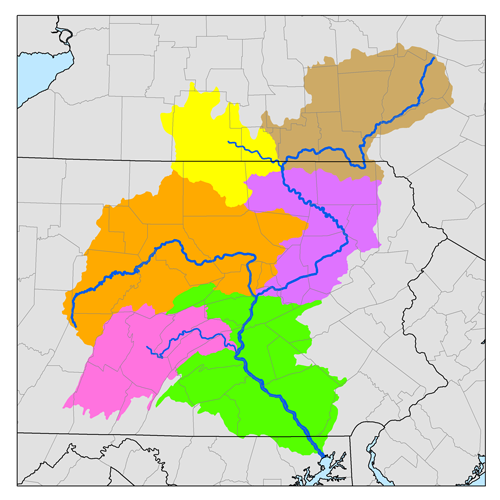digital line graph on:
[Wikipedia]
[Google]
[Amazon]
 A Digital Line Graph (DLG) is a cartographic map feature represented in digital
A Digital Line Graph (DLG) is a cartographic map feature represented in digital
 DLGs are normally derived from USGS maps or USGS map-related sources. DLGs are distributed at three different scales: large-scale, which normally correspond to the USGS 7.5- by 7.5-minute, 1:24,000 and 1:25,000-scale topographic quadrangle map series, 1:63,360-scale for
DLGs are normally derived from USGS maps or USGS map-related sources. DLGs are distributed at three different scales: large-scale, which normally correspond to the USGS 7.5- by 7.5-minute, 1:24,000 and 1:25,000-scale topographic quadrangle map series, 1:63,360-scale for
USGS Digital Line GraphsUSGS Product GuidesNational Atlas home page''The National Map''
Cartography United States Geological Survey GIS vector file formats
 A Digital Line Graph (DLG) is a cartographic map feature represented in digital
A Digital Line Graph (DLG) is a cartographic map feature represented in digital vector
Vector most often refers to:
* Euclidean vector, a quantity with a magnitude and a direction
* Disease vector, an agent that carries and transmits an infectious pathogen into another living organism
Vector may also refer to:
Mathematics a ...
form that is distributed by the U.S. Geological Survey
The United States Geological Survey (USGS), founded as the Geological Survey, is an agency of the U.S. Department of the Interior whose work spans the disciplines of biology, geography, geology, and hydrology. The agency was founded on March ...
(USGS). DLGs are collected from USGS maps and are distributed in large, intermediate and small scale with up to nine different categories of features, depending on the scale. They come in optional and Spatial Data Transfer Standard (SDTS) format and are topologically structured for use in mapping and geographic information system
A geographic information system (GIS) consists of integrated computer hardware and Geographic information system software, software that store, manage, Spatial analysis, analyze, edit, output, and Cartographic design, visualize Geographic data ...
(GIS) applications.
Description
 DLGs are normally derived from USGS maps or USGS map-related sources. DLGs are distributed at three different scales: large-scale, which normally correspond to the USGS 7.5- by 7.5-minute, 1:24,000 and 1:25,000-scale topographic quadrangle map series, 1:63,360-scale for
DLGs are normally derived from USGS maps or USGS map-related sources. DLGs are distributed at three different scales: large-scale, which normally correspond to the USGS 7.5- by 7.5-minute, 1:24,000 and 1:25,000-scale topographic quadrangle map series, 1:63,360-scale for Alaska
Alaska ( ) is a non-contiguous U.S. state on the northwest extremity of North America. Part of the Western United States region, it is one of the two non-contiguous U.S. states, alongside Hawaii. Alaska is also considered to be the north ...
and 1:30,000-scale for Puerto Rico
; abbreviated PR), officially the Commonwealth of Puerto Rico, is a Government of Puerto Rico, self-governing Caribbean Geography of Puerto Rico, archipelago and island organized as an Territories of the United States, unincorporated territo ...
; intermediate scale, which are derived from the USGS 30- by 60-minute, 1:100,000-scale map series; and small-scale, which are derived from the USGS 1:2,000,000-scale sectional maps of the National Atlas of the United States
The ''National Atlas of the United States'' was an atlas published by the United States Department of the Interior from 1874 to 1997.
Older editions were printed, but the most recent edition was available online. Since it is a publication of ...
. Large-scale DLGs are usually cast on the Universal Transverse Mercator coordinate system
The Universal Transverse Mercator (UTM) is a map projection system for assigning Geographic coordinate system, coordinates to locations on the surface of the Earth. Like the traditional method of latitude and longitude, it is a horizontal positi ...
(UTM), but are sometimes cast on the State Plane rectangular coordinate system. Intermediate-scale DLGs are sold in 30- by 30-minute sections that correspond to the east or west half of the 100K quadrangle map, and each of the 30-minute sections is distributed in four 15- by 15-minute cells and is cast on the UTM coordinate system. Small-scale DLGs are sold in state units and are cast on either the Albers equal-area conic projection system or the geographic coordinate system
A geographic coordinate system (GCS) is a spherical coordinate system, spherical or geodetic coordinates, geodetic coordinate system for measuring and communicating position (geometry), positions directly on Earth as latitude and longitude. ...
of latitude and longitude
A geographic coordinate system (GCS) is a spherical or geodetic coordinate system for measuring and communicating positions directly on Earth as latitude and longitude. It is the simplest, oldest, and most widely used type of the various ...
, depending on the distribution format. All DLGs are referenced to the North American Datum
The North American Datum (NAD) is the Geodetic datum#Horizontal datum, horizontal datum now used to define the Geodesy, geodetic network in North America. A datum is a formal description of the shape of the Earth along with an "anchor" point fo ...
of 1927 (NAD27) or the North American Datum of 1983 (NAD83). USGS DLGs are topologically structured for use in mapping and geographic information system
A geographic information system (GIS) consists of integrated computer hardware and Geographic information system software, software that store, manage, Spatial analysis, analyze, edit, output, and Cartographic design, visualize Geographic data ...
(GIS) applications.
Data categories
Nine different categories of features, or layers, are available in DLGs:Public Land Survey System
The Public Land Survey System (PLSS) is the surveying method developed and used in the United States to plat, or divide, real property for sale and settling. Also known as the Rectangular Survey System, it was created by the Land Ordinance of 17 ...
(PLSS), Boundaries (BD), Transportation (TR), Hydrography
Hydrography is the branch of applied sciences which deals with the measurement and description of the physical features of oceans, seas, coastal areas, lakes and rivers, as well as with the prediction of their change over time, for the primary ...
(HY), Hypsography (HP), Non-vegetative features (NV), Survey control and markers (SM), Man-made features (MS) and Vegetative surface cover (SC). Large-scale DLGs offer all nine layers, while intermediate-scale DLGs offer the five layers of PLSS, BD, TR, HY and HP. Small-scale DLGs offer the five layers of PLSS, BD, TR, HY and MS.
Distribution formats
DLGs are available in two different formats: optional format, a simple-to-use format that incorporates an 80-byte logical record length, the UTM ground coordinate system, andtopology
Topology (from the Greek language, Greek words , and ) is the branch of mathematics concerned with the properties of a Mathematical object, geometric object that are preserved under Continuous function, continuous Deformation theory, deformat ...
linkages contained in line, node and area elements; and Spatial Data Transfer Standard (SDTS) format, a format that facilitates transferring of spatial data between different computer systems.
Large-scale DLGs are available in optional format and will also be available in SDTS format as the data from each state is converted. Intermediate-scale DLGs are available in optional format and the HY and TR layers are also available in SDTS format. Small-scale DLGs are available in both optional and SDTS formats.
References
{{reflistExternal links
USGS Digital Line Graphs
Cartography United States Geological Survey GIS vector file formats